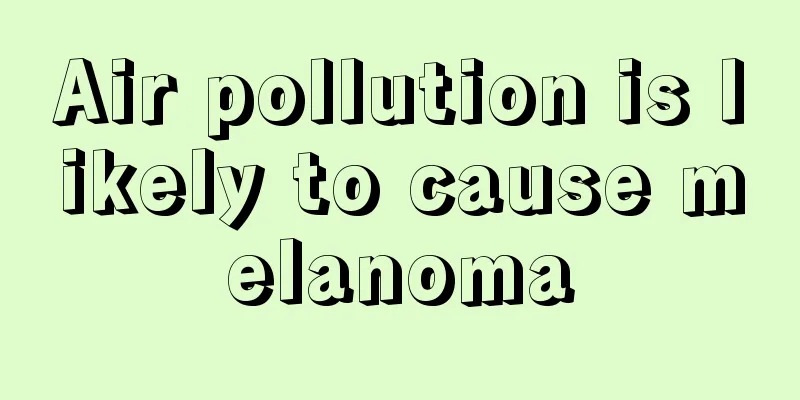What is the reason for a black tongue

|
In fact, everyone has their own characteristics. Under normal circumstances, a person's tongue is light white. If the color of the tongue changes, then most of the time there is some problem with the body. For example, if the tongue is too white, it means that the person has a cold constitution, etc. It can be said that the color of a person's tongue can reflect his health problems. If the color of the tongue changes, then under normal circumstances it is a problem with the person's constitution. Some people have black tongues, which looks scary. In fact, this is also a manifestation of a disease. So what kind of problem is black tongue? What causes black tongue?The color of normal people's tongue coating is thin and white. Because the tips of the filiform papillae in the tongue mucosa are differentiated into "keratinized trees", the gaps between the branches of the "keratinized trees" are often filled with desquamated keratinized epithelium, saliva, bacteria, mold, food debris and exuded white blood cells. These opaque substances cover the red color of the tongue capillaries, and the keratinized epithelium can absorb water and appear white when moist, thus forming a normal thin, white and moist tongue coating. Too white tongue coating: It is mostly a cold symptom, thin and slippery tongue coating is mostly due to exogenous wind-cold, thick, white and slippery tongue coating is mostly due to cold-dampness or cold phlegm. Yellow tongue coating: It is usually seen in the course of febrile diseases, indicating that the struggle between evil and righteousness is very fierce, the disease has entered the interior, and the evil has turned into heat. Black tongue coating: It is mainly caused by the proliferation and darkening of the filiform papillae of the tongue. There are different shades of brown, gray, charred, and even pitch black. Traditional Chinese medicine believes that if a patient has this kind of tongue coating, the illness must be of a long duration and the disease is complex and serious. The tongue coating is gray and white or gray, greasy, thin and slippery: it is mostly due to internal cold, with symptoms of weakness and febrile disease, or long-term illness and indigestion. The whole tongue is pale purple with blue: smooth and without coating, which is a positive symptom of typhoid fever. Brown tongue coating: intestinal obstruction. Mirror tongue: the tongue has no coating and is as smooth as a mirror. In mild cases, it indicates malnutrition, or lack of iron or vitamin B2 in the body; in severe cases, it means lack of body fluid and serious illness. If the patient has been ill for a long time and has a mirror-like tongue with crimson color, sepsis should also be prevented. If an elderly person's tongue is as smooth as a mirror and the two veins at the bottom of the tongue are thickened and elongated, it indicates cor pulmonale. Penetrating tongue: There is a small blank space in the middle of the tongue coating, and the tongue coating has peeled off. Piercing tongue is a manifestation of damage to yin, and often indicates a lack of nutrition in the body. If children have peeling tongue coating, it indicates malnutrition, which is mainly caused by picky eating, resulting in a lack of certain nutrients in the body, causing partial peeling of the tongue coating. Such children have poor resistance and are prone to catching colds or fevers. Beef tongue: The tongue is dark red, with a smooth coating like beef. Beef tongue is commonly seen in patients with pernicious anemia. Tofu moss: It is a relatively thick moss with large and loose particles, shaped like tofu dregs. It is a thick layer piled on the tongue. It is easy to scrape off, but it will gradually pile up again after a while. The presence of rotten moss indicates that the person has excess Yang energy, which can lift and dispel the turbid and rotten air in the stomach. It is a sign that the battle between good and evil is taking place and the disease is getting better. Greasy coating: It is thicker in the center and root of the tongue, slightly thinner at the edges and tip of the tongue. The particles are small and dense, clinging to the tongue and cannot be wiped off or scraped off. The surface of the tongue is covered with a layer of mucus like greasy, and most of the tongue quality is obscured by it and cannot be seen. When viewed with a magnifying glass, the number and branching of the filiform papillae of the greasy moss have increased, and the keratinized trees of each papilla are entangled with each other and not easy to fall off, and a lot of mucus and food particles are embedded in them. Traditional Chinese medicine believes that greasy tongue coating is caused by the suppression of Yang Qi by Yin evil, and there must be pathological changes in the body such as dampness, phlegm, or food accumulation and stubborn phlegm. Such as acute and chronic gastroenteritis. Moldy moss: The texture of the moss is similar to that of rotten moss, floating and loose, but the moss on the tongue does not spread flat on the tongue like rotten moss, but is like grayish-white erosion spots or rice grains, accumulated on the tongue of varying thickness. Therefore, moldy moss can be identified by this. It is usually caused by physical weakness, or excessive use of hormones, immunosuppressants and broad-spectrum antibiotics, which lead to low immune function, extremely poor resistance, dysbacteriosis, and fungi taking the opportunity to grow and multiply. This coating usually first occupies a part of the tongue, and then spreads to the entire tongue or the entire mouth. The condition is usually serious. Mold moss is of great value in the diagnosis of fungal diseases. Prickly tongue: refers to the tongue with many red thorns protruding from the surface of the tongue, like moldy fruits. If the spots appear on the tip or edge of the tongue, it means that the heat is severe, which can be seen in patients with various febrile infectious diseases or large-area burns. If the spots appear in the middle of the tongue, it is mostly because the heat toxicity is more severe or the heat has entered the blood, which can easily lead to shock and coma. People who suffer from insomnia, constipation, or work stressfully at night, as well as those with vitamin deficiency, malnutrition, and cerebral cortex dysfunction, may also have red spots on the tongue, which Chinese medicine calls "yin deficiency and fire excess." There is still pain when pricking the tongue surface, but the pain will disappear quickly after resting, adjusting the nutritional structure and ensuring smooth bowel movements. Modern research believes that the punctures are caused by the proliferation or hypertrophy of the tongue's papillae. Fissured tongue: The cracks on the tongue surface include deep cracks, shallow cracks, and cracks and wrinkles in different directions. Shallow cracks are like wrinkles, while deep cracks are like being cut and shredded by a knife, with irregular grooves. About 0.5% of normal people are born with congenital cleft tongue. Modern medicine believes that the shallow cracks on the tongue are mainly caused by atrophy of the tongue mucosa, which causes the original longitudinal and transverse lines of the tongue muscles to show through the surface; the deep cracks on the tongue are more serious atrophic lesions of the tongue, which causes the tongue muscle epithelium to lose its normal structure, and some of the tongue papillae become flat and fused, while others atrophy and break to form cracks. The patterns of cracks on the tongue are really strange, including longitudinal, transverse, tree fork, well, hexagram, or brain-like grooves, and some are like pebbles. Pathological fissure tongue often coexists with atrophic tongue, and can be seen in some chronic wasting diseases, as well as cases of chronic glossitis caused by malnutrition and vitamin B deficiency, and is often accompanied by tongue pain, dry mouth and other phenomena. Some long-term geographic tongue may later turn into fissured tongue. Traditional Chinese medicine believes that cracked tongue with dry tongue surface is mostly due to insufficient body fluid; if there is also excessive heat, the tongue may also be red. The color of the tongue is actually an important factor that affects your health. Therefore, if the color of your tongue changes, it is best to go directly to the hospital to check whether there are any health problems with your body and try to adjust the color of your tongue. |
<<: Preventive graying of hair
>>: What is the best way to get rid of eye bags
Recommend
What medicine is better for treating ovarian tumors
Traditional Chinese medicine has less toxic side ...
Requirements for being a fitness trainer
Nowadays, fitness has become a mainstream topic i...
What oral medications are there for liver cancer? There are these seven types of drugs
Liver cancer is a malignant tumor that appears in...
How to choose a facial mask
As the human body ages, many of its functions dec...
Difference between sweating and urination
Why is sweating so important to the body? The fun...
What is erysipelas vasculitis?
We can first explain this disease by dividing it ...
Bleach ingredients
People may rarely come into contact with bleach i...
What should I do if liver cancer recurs one month after surgery?
If liver cancer recurs one month after surgery, i...
Uncovering the genetic secrets of fibroids
Uncover the genetic secrets of fibroids. Genetics...
My stomach is upset and my throat is blocked
Stomach discomfort is a symptom suffered by many ...
What are the treatments for brain metastases from small cell lung cancer?
Once the cancer reaches the stage of metastasis, ...
What to do with a swollen belly
The cause of lower abdominal distension may be le...
How to effectively remove flat warts on hands
Flat warts are a viral skin disease, which is a s...
What is the rate of early cure of lymphoma? What should be paid attention to in the diet and health care of lymphoma?
Early treatment of lymphoma drugs will enable pat...
Why do I feel dizzy when I wake up?
Sleeping is a very happy thing. Everyone spends 2...









